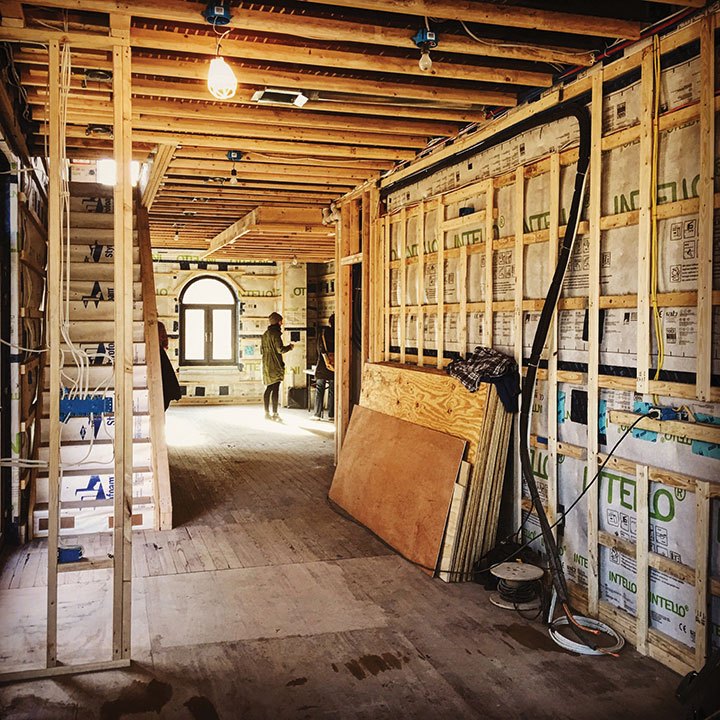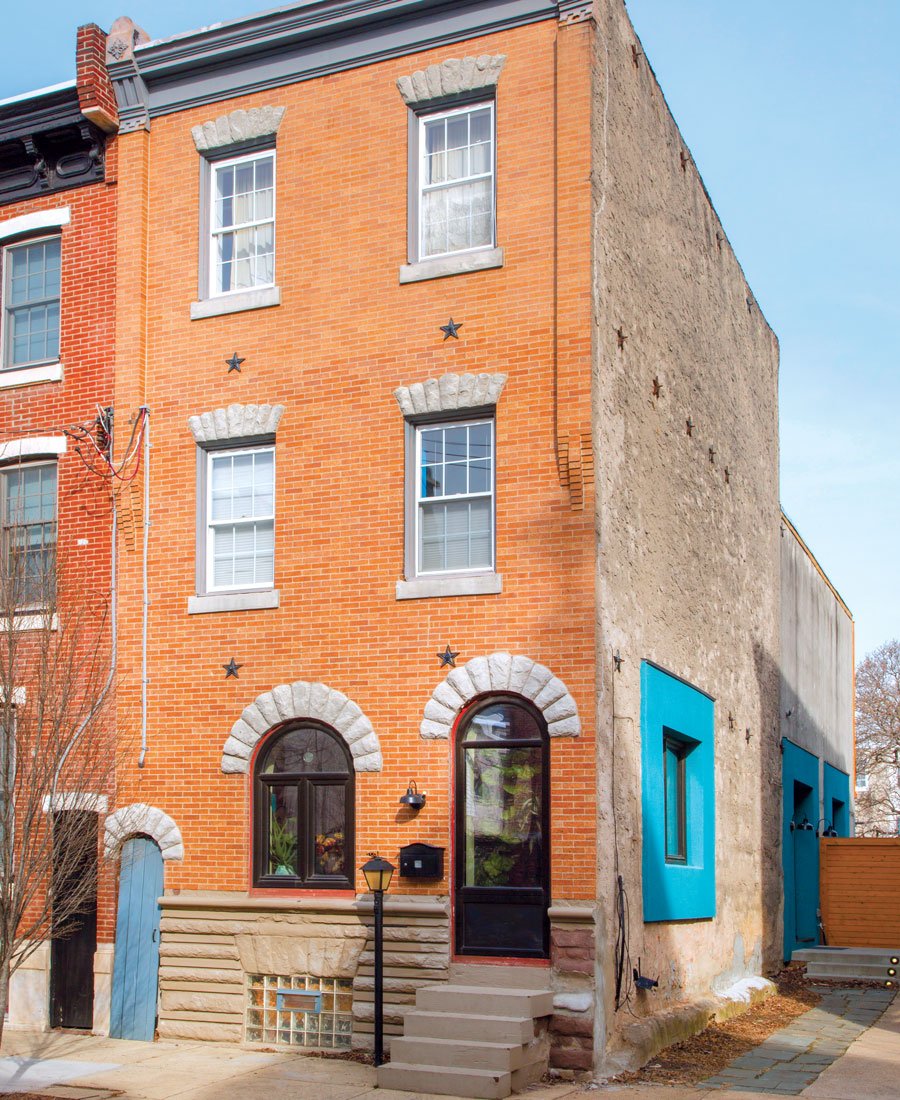Real Home Makeovers: How a Fishtown Couple Retrofitted Their Rowhome to Be an Eco-Friendly Dream House
First they gutted it. Now they’re working toward making it a carbon-free, zero-energy house.

Inside the home, post-renovation. New energy-saving triple-pane Passive House windows help keep the home airtight. Photograph by Courtney Apple
When Maura Diberardinis and Pete Angevine hired Jeremy Avellino of Bright Common to redo their Fishtown rowhouse, their goal was to make it feel more open and have it accommodate the parties they planned to host. But Avellino, an expert in Passive House design — a set of building standards that prioritizes energy efficiency — convinced them to do something more: work toward making it a carbon-free, zero-energy house.
The key to achieving this was wrapping the inside in a membrane that prevents heat from leaking out. Since the couple already had plans to gut the structure, upgrading their insulation didn’t have much effect on their bottom line. But it will lead to cost savings over time: The super-insulation dramatically reduces the need for air conditioning and heating, so most of the climate control is handled by a heat and air exchanger. Using electricity from non-fossil fuels as the sole energy source further reduces the house’s carbon footprint.

During the renovation, new, airtight insulation was installed. Photograph courtesy Bright Common
Avellino also helped the homeowners achieve their initial goal: The house now has an open main floor, a second-floor living room, and a more spacious kitchen that opens onto the backyard.
Diberardinis is grateful that Avellino convinced them to go the Passive House route: “We believe in the importance of all these things, and once we were given the opportunity to make better choices, we wanted to put our money where our mouth was.”
FAST FACTS
Home built in: The 1850s
Project timeline: 12 months
Budget: $20,000 for insulation
Architect: Jeremy Avellino of Bright Common
Electrician: Bella Vista Electric
Carpenter: Andy Black

The exterior of the home. Photograph by Courtney Apple
A Pro on How to Make Your Home More Efficient
1. Consider the Passive House route if you’re doing a full gut.
It’s easiest to change your home’s insulation when you’re already taking down walls. “Everything being equal, it’s usually a five to 10 percent construction-cost increase and some increase in consultation,” says architect and Passive House expert Jeremy Avellino. And that “gut” can refer to the interior or exterior of the house — your insulation options aren’t limited to inside your walls.
2. Call PECO.
There are many ways to make your home more efficient without tearing it down to the studs. Avellino recommends hiring an energy auditor — PECO has a program that will send a consultant to your home for $50 — who can identify all the windows, fireplaces, ducts and more that are leaking energy.
3. Remember that greener doesn’t always mean more expensive.
There isn’t a huge price difference between the recycled-newsprint insulation Avellino uses and other varieties. High-performance triple-pane windows aren’t prohibitively expensive, either. “There are so many other windows that are so much more expensive that aren’t as energy-efficient,” says Avellino.
Published as “Creating a Zero-Energy House” in the “Home Makeovers: Philly Edition” article in the March 2020 issue of Philadelphia magazine.


